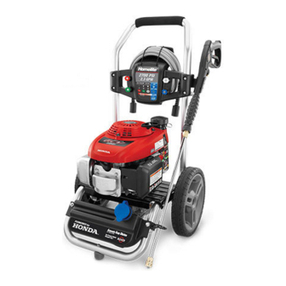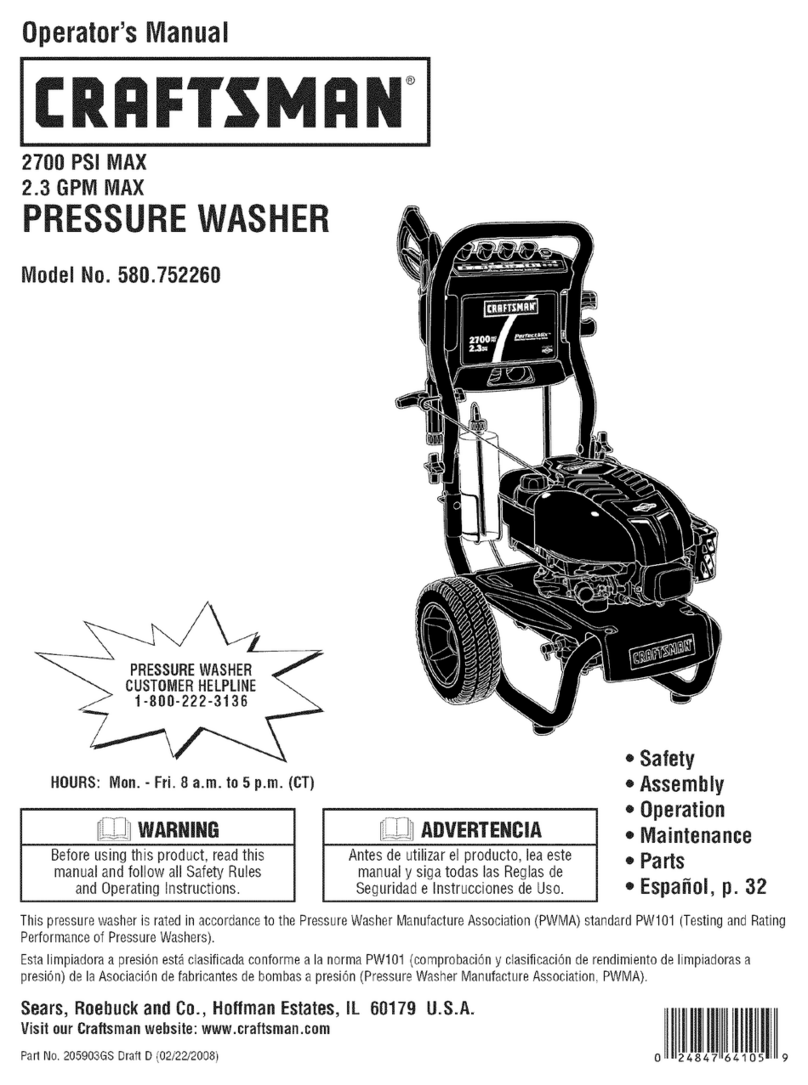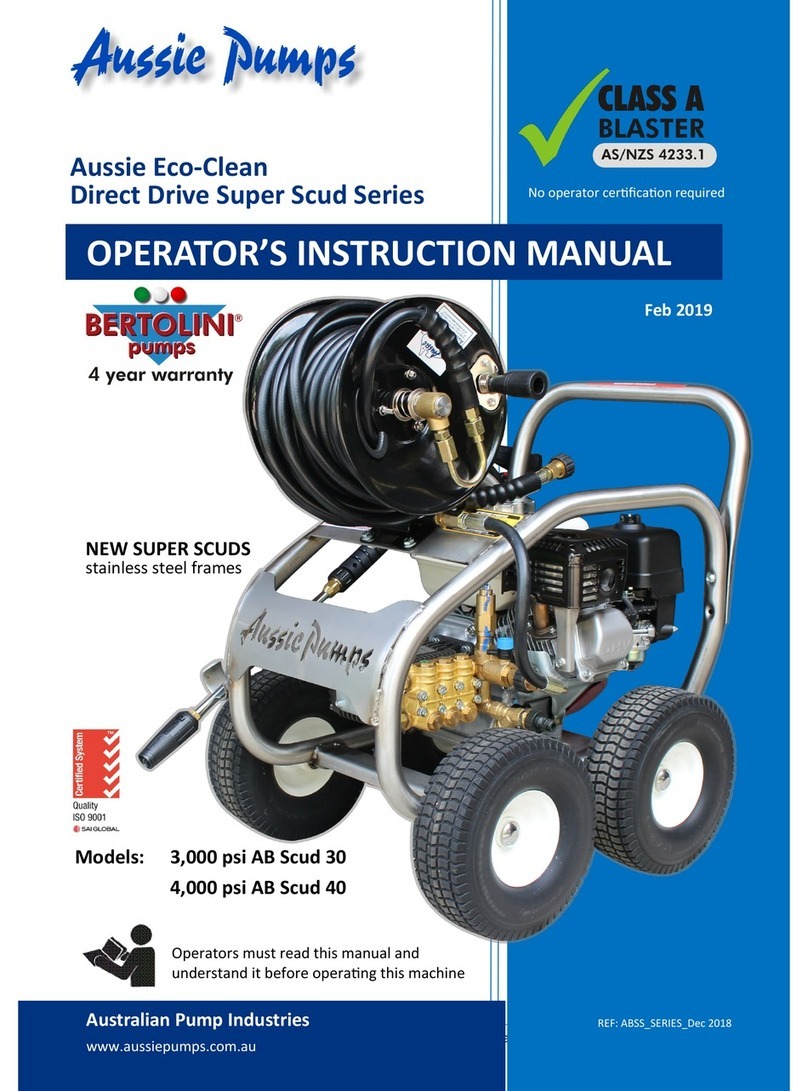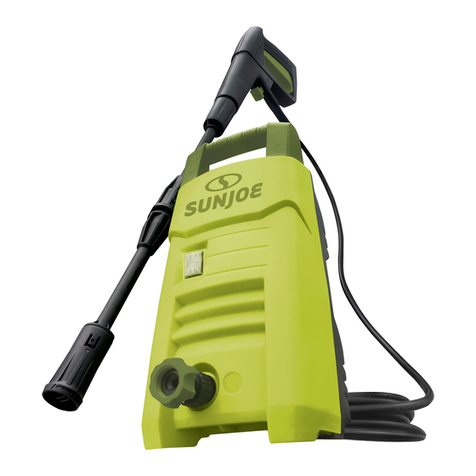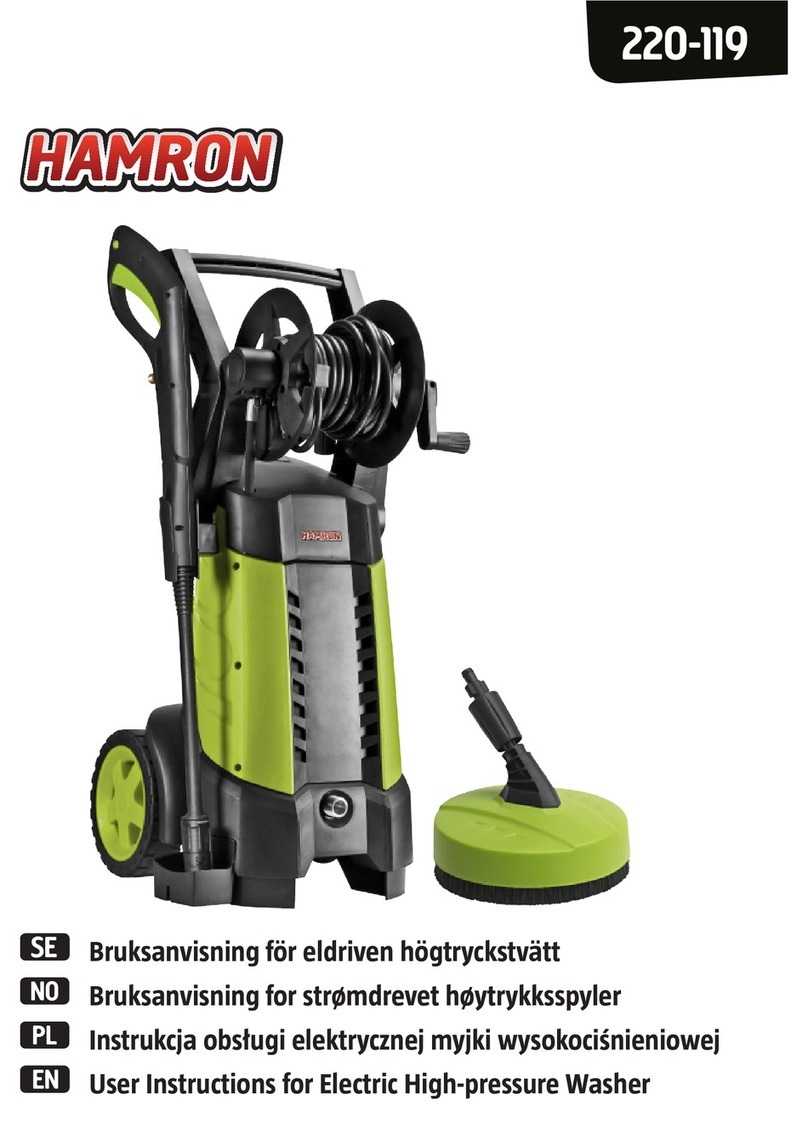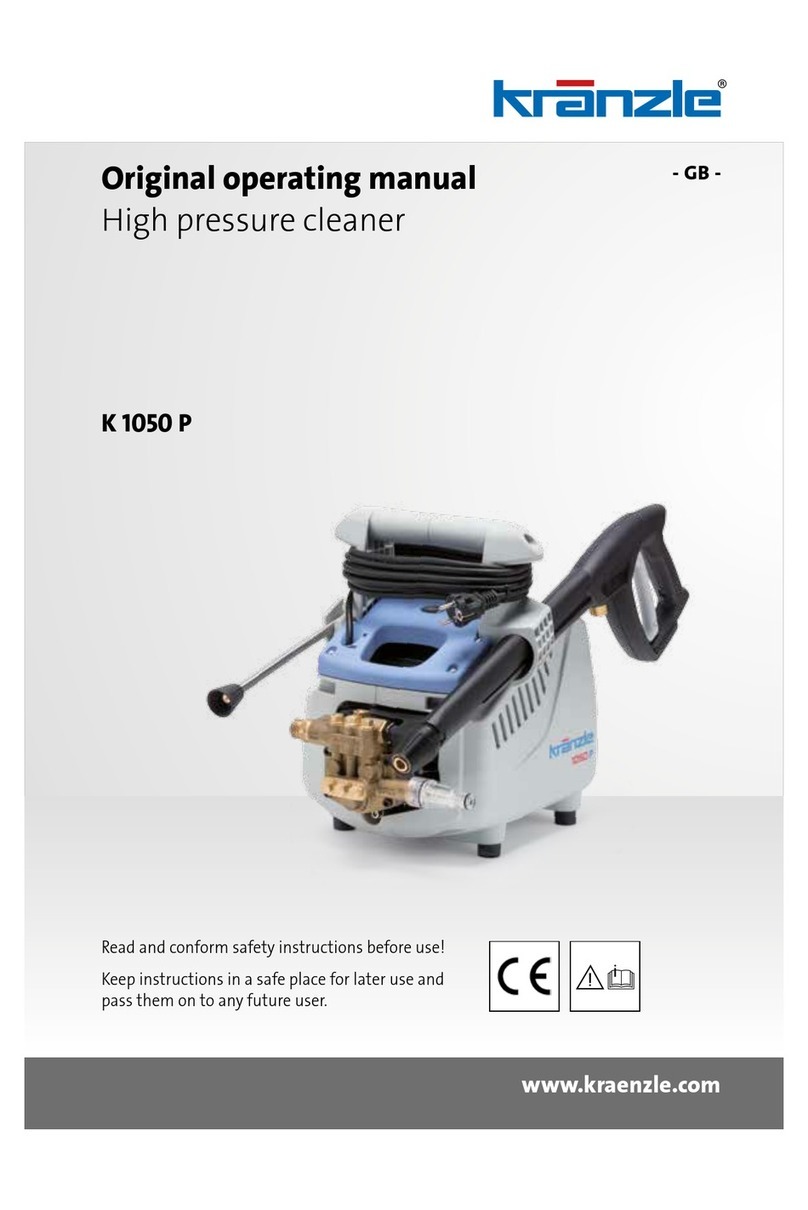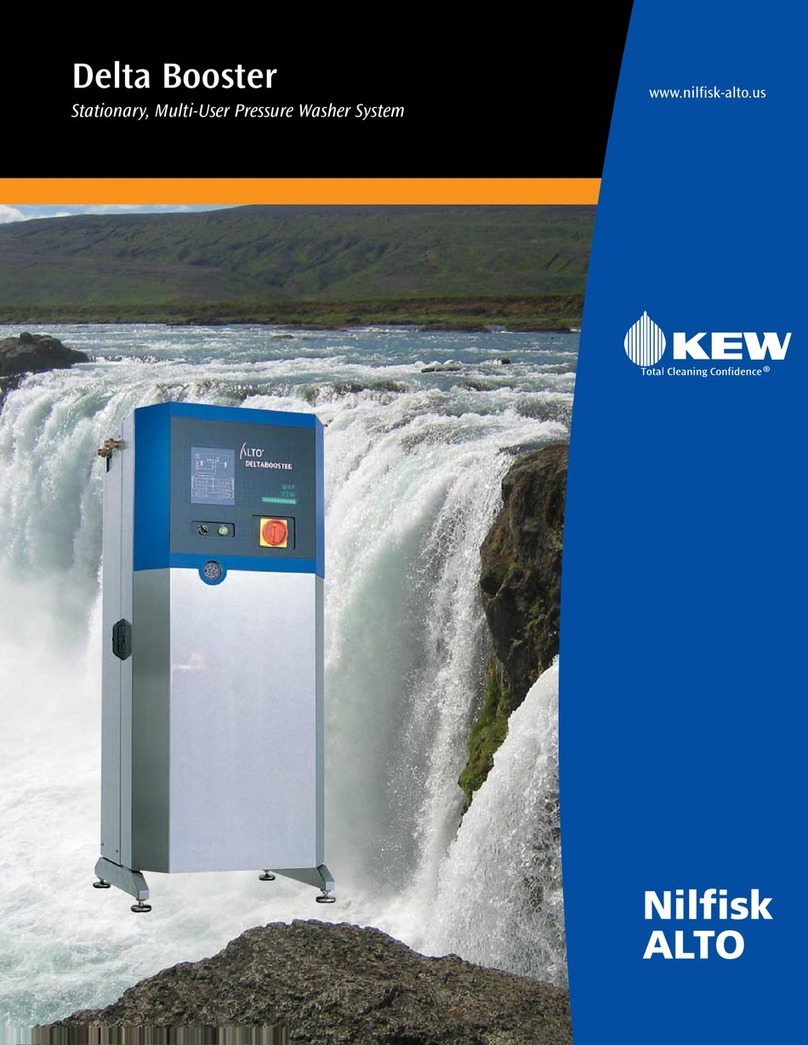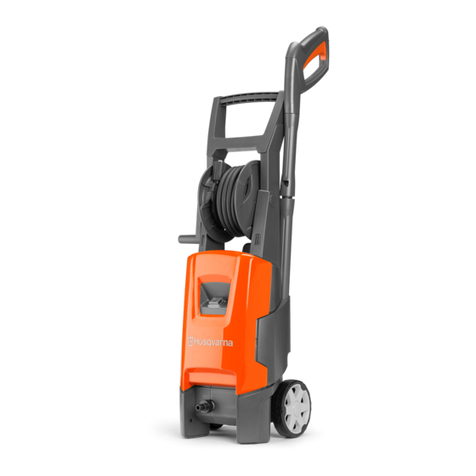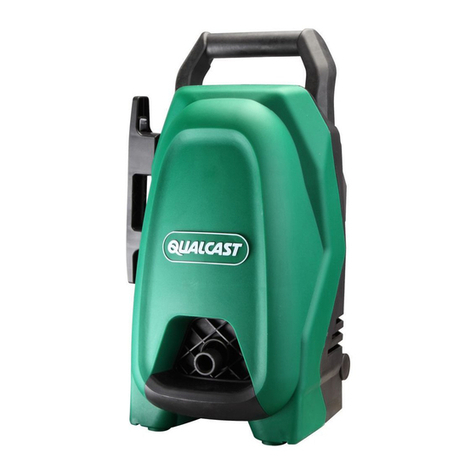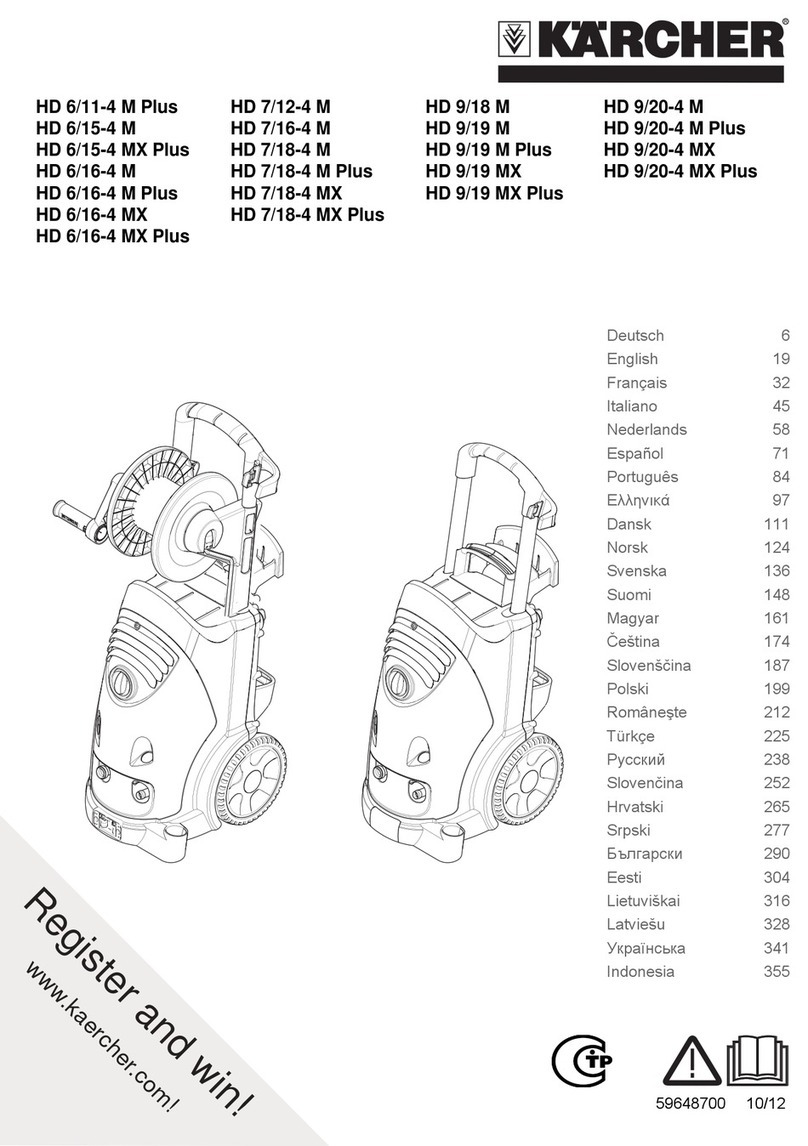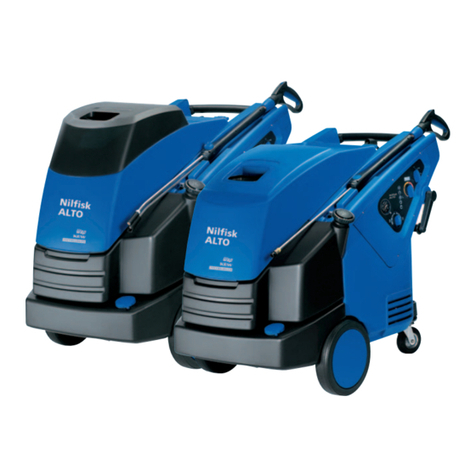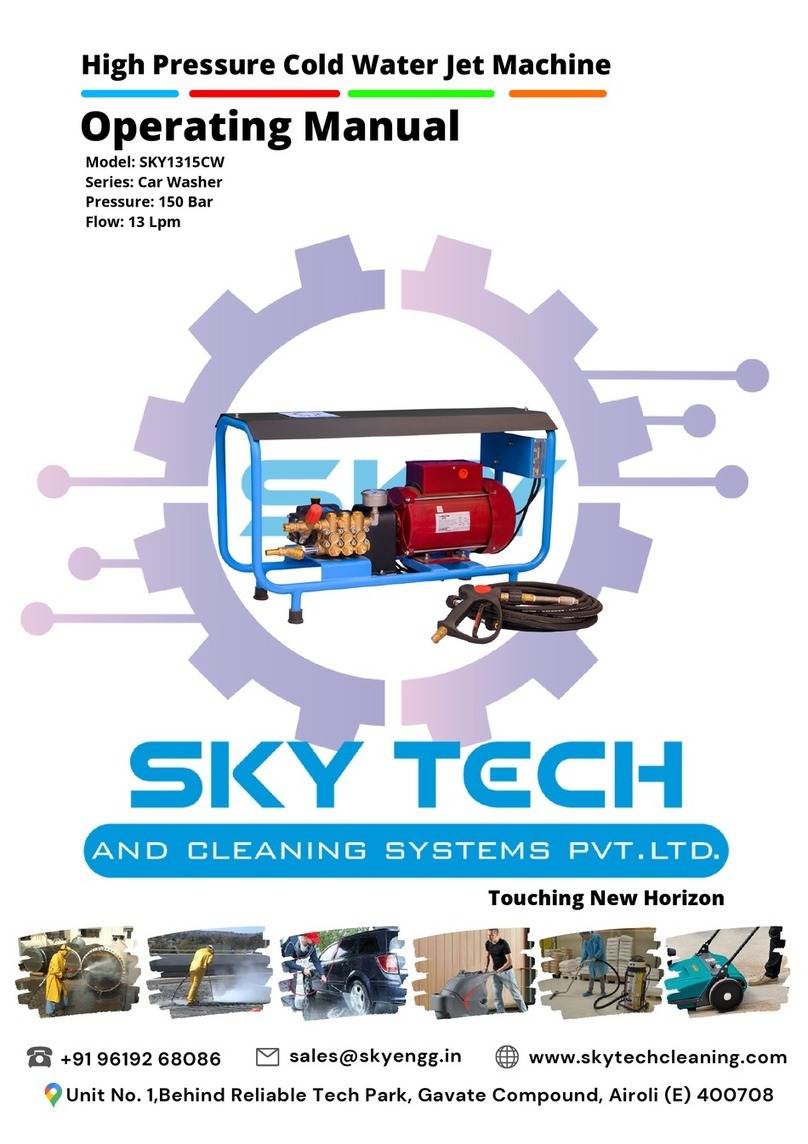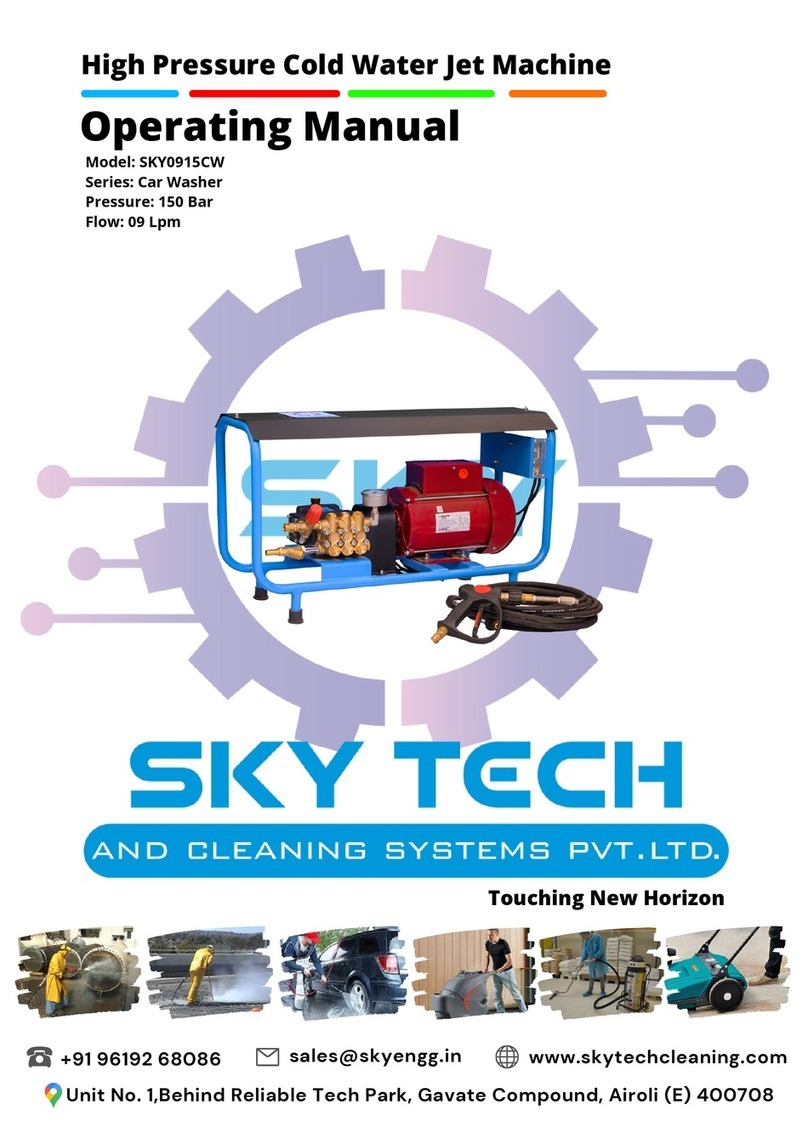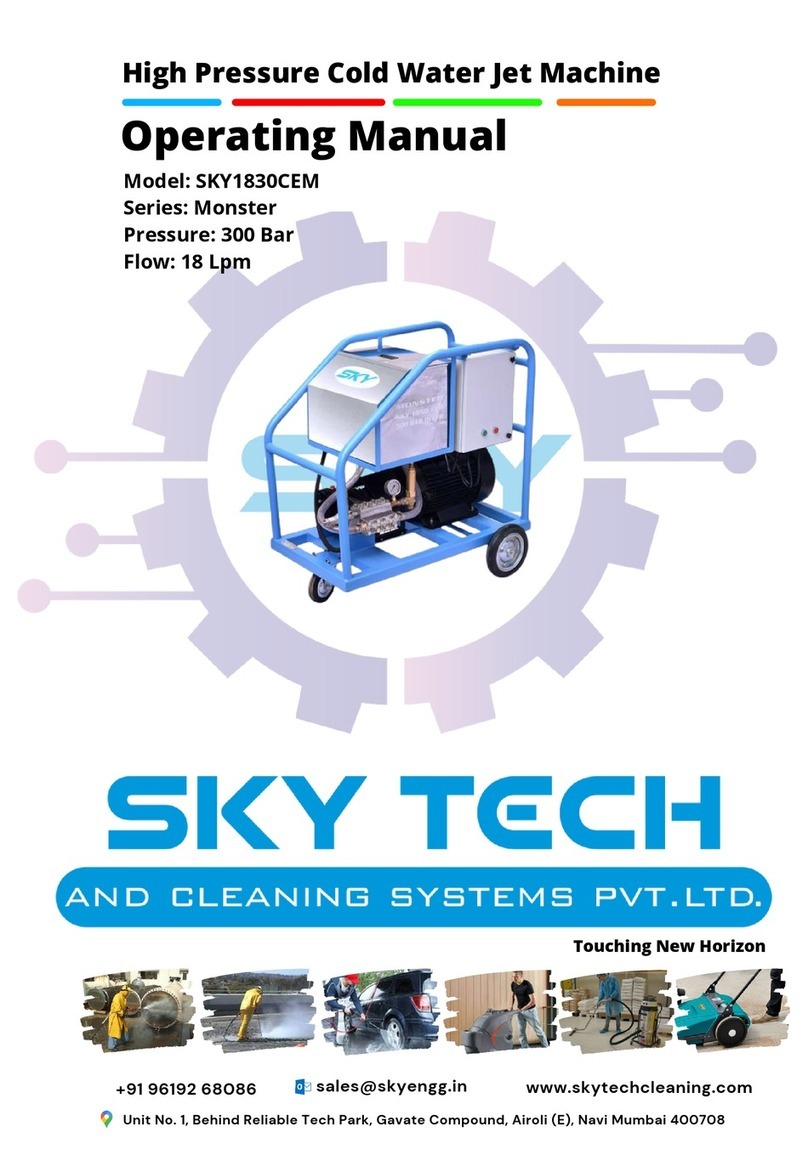
with the data written on
7. INSTALLATION, START UP AND
POSITIONING
Smaller and lighter Pumps can be handled by hand in compliance with current standards. Heavier
Pumps must be handled using the dedicated hook and
you need to use a lifting device, use appropriate strap/s, being careful not to damage the product. The
weight of the Pumps is written in
If the Pump is used in particularly dirty
recommended to
ASSEMBLY
Fit the Pump on a rigid surface keeping the power take
correct drainage in the
case of leakage of water or oil. The Pump must be secured firmly on a base,
which must be perfectly aligned with the transmission components. In the case of belt transmission,
make sure the pulleys are aligned
Use
appropriately sized hoses, both on the inlet and outlet of the Pump, according to the technical
specifications written on the
START UP
Before starting, check the
Replace the RED cap
accessories supplied.
Check the oil level
Check the pressure
The pressure regulator
Start and run the Pump for approximately 10 seconds until all the liquid has discharged from the
delivery line. Once the intake cycle is complete, you can set the Pump at the required pressure, by
adjusting the pressure
regulator valve, without ever exceeding the maximum pressure written on the
Pump's Label.
SWITCHING OFF
After use or if the Pump is to be put away in storage, wash it internally. You can do this by running the
Pump for several minutes with
clean water, then disconnect the supply line and leave the Pump to run
for approximately 15 seconds so
A few minutes devoted to the
pump's lifetime.
Do not wash the Pump externally: water could get into the Pump crankcase, for example
through the oil vent cap.
After switching off, the
Do not throw the liquid
PRECAUTIONS
If shutdown during winter or in the case of places and seasons subject to frost, once the Pump has
finished working, run it for the time required to pump an emulsion of 50% of clean water and
antifreeze fluid through it in order
The Pump must not be used to
In the presence of ice or very
started; otherwise the Pump
completely defrosted.
Pump's Label.
OFF
Smaller and lighter Pumps can be handled by hand in compliance with current standards. Heavier
Pumps must be handled using the dedicated hook and
suitable lifting device. If there is no eyelet and
you need to use a lifting device, use appropriate strap/s, being careful not to damage the product. The
table on page 25.
If the Pump is used in particularly dirty
workplaces or is exposed to atmospheric agents, you are
the ventilation conditions.
Fit the Pump on a rigid surface keeping the power take
-
off and support feet horizontal to ensure
case of leakage of water or oil. The Pump must be secured firmly on a base,
which must be perfectly aligned with the transmission components. In the case of belt transmission,
and check the tension of the belts.
appropriately sized hoses, both on the inlet and outlet of the Pump, according to the technical
the Pump Crankcase with the venting cap in the
the dedicated oil reservoir or inspection cap; top-up if
on the accumulator, if installed; inflate or deflate if
must be set at "0" pressure to favour intake.
Start and run the Pump for approximately 10 seconds until all the liquid has discharged from the
delivery line. Once the intake cycle is complete, you can set the Pump at the required pressure, by
regulator valve, without ever exceeding the maximum pressure written on the
AND STORAGE
After use or if the Pump is to be put away in storage, wash it internally. You can do this by running the
clean water, then disconnect the supply line and leave the Pump to run
all the water in the head is discharged.
washing of the pump brings considerable benefits in
Do not wash the Pump externally: water could get into the Pump crankcase, for example
p could remain very hot for some time.
to wash the Pump outdoors but observe current
FREEZING
If shutdown during winter or in the case of places and seasons subject to frost, once the Pump has
finished working, run it for the time required to pump an emulsion of 50% of clean water and
and damage to the Pump.
antifreeze fluid that is not mixed with water.
temperatures at the workplace, the Pump must
be seriously damaged. To start the system, the whole
Smaller and lighter Pumps can be handled by hand in compliance with current standards. Heavier
suitable lifting device. If there is no eyelet and
you need to use a lifting device, use appropriate strap/s, being careful not to damage the product. The
workplaces or is exposed to atmospheric agents, you are
off and support feet horizontal to ensure
case of leakage of water or oil. The Pump must be secured firmly on a base,
which must be perfectly aligned with the transmission components. In the case of belt transmission,
appropriately sized hoses, both on the inlet and outlet of the Pump, according to the technical
kit of
Start and run the Pump for approximately 10 seconds until all the liquid has discharged from the
delivery line. Once the intake cycle is complete, you can set the Pump at the required pressure, by
regulator valve, without ever exceeding the maximum pressure written on the
After use or if the Pump is to be put away in storage, wash it internally. You can do this by running the
clean water, then disconnect the supply line and leave the Pump to run
of the
Do not wash the Pump externally: water could get into the Pump crankcase, for example
If shutdown during winter or in the case of places and seasons subject to frost, once the Pump has
finished working, run it for the time required to pump an emulsion of 50% of clean water and
50% of
be
must be





















